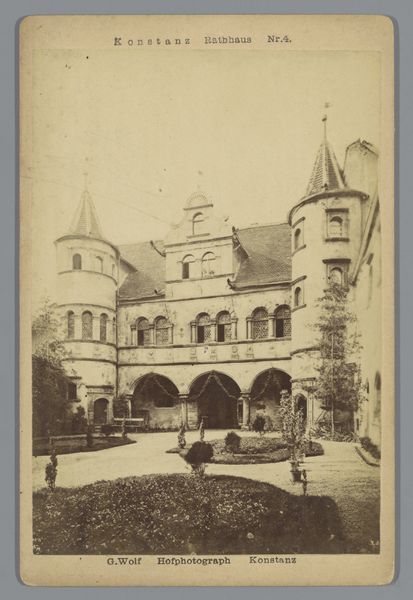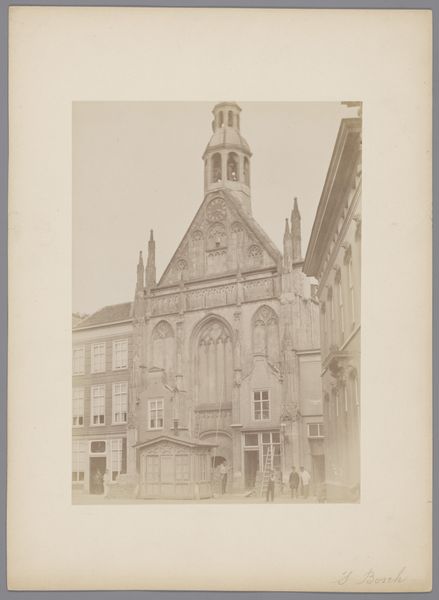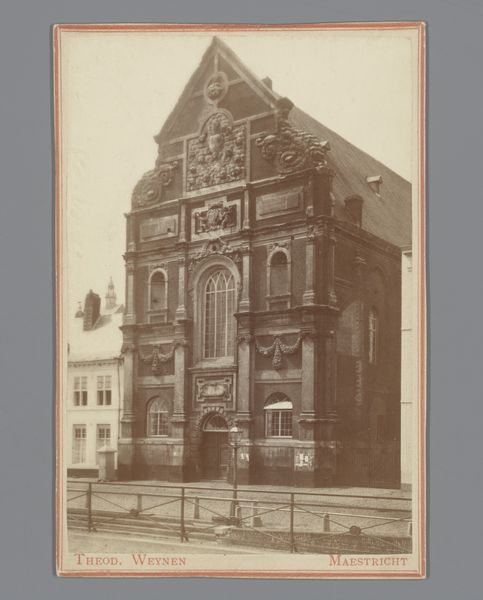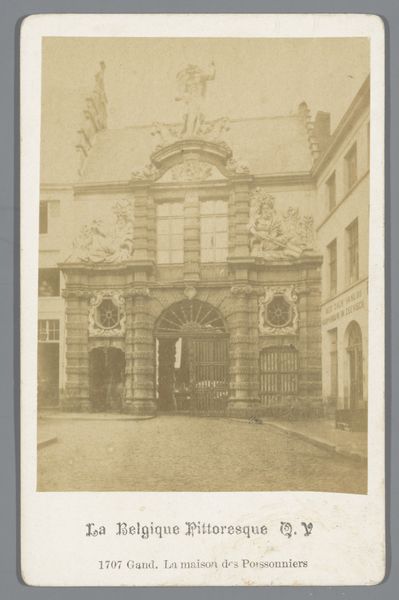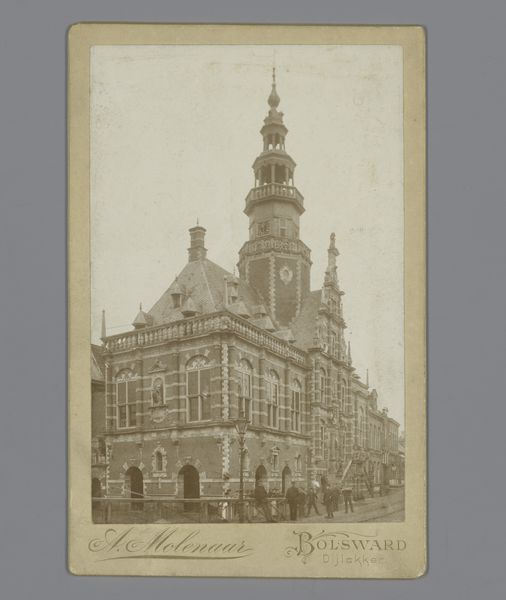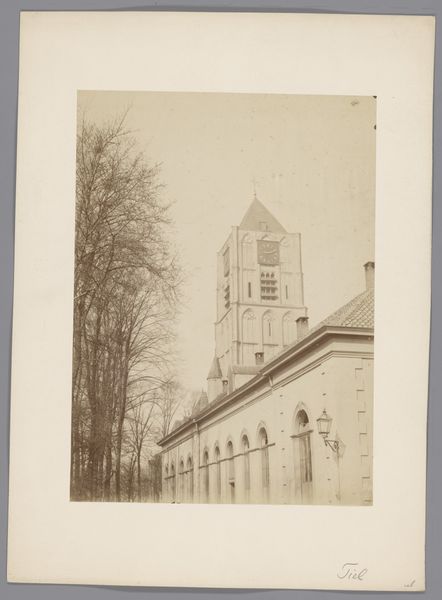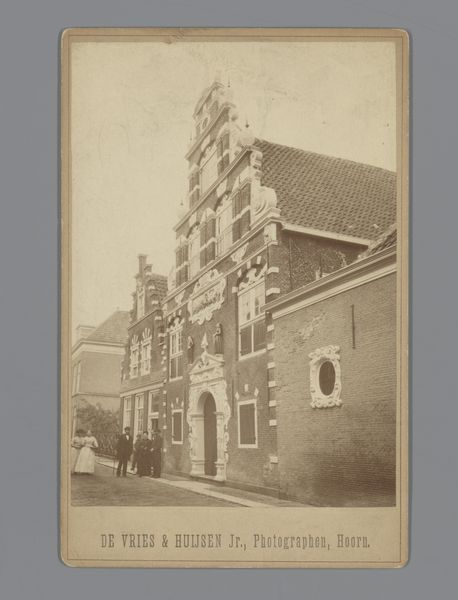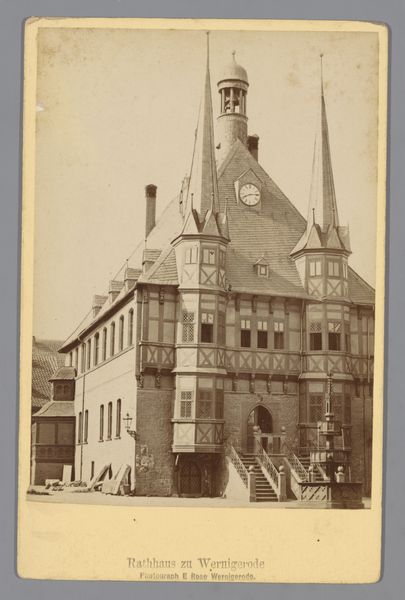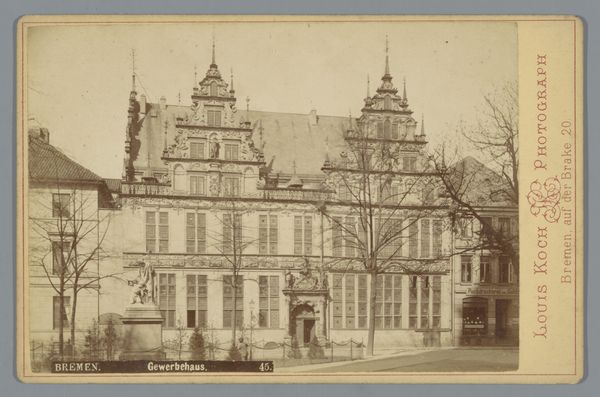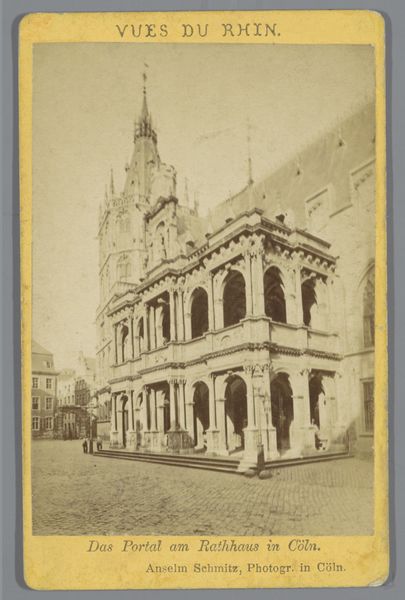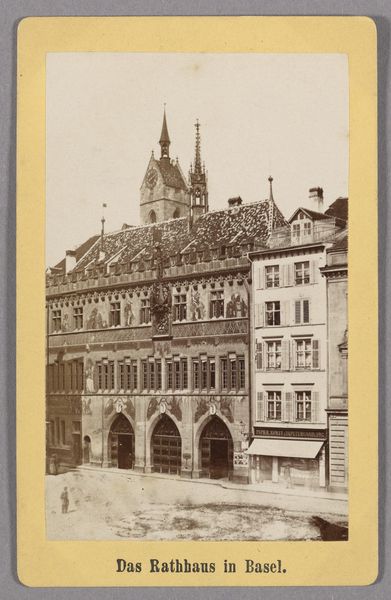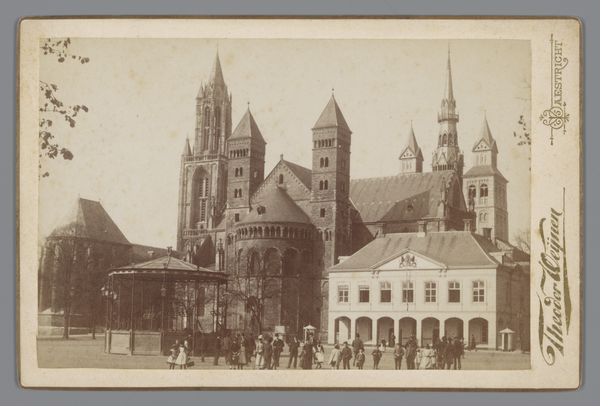
Dimensions: height 106 mm, width 67 mm
Copyright: Rijks Museum: Open Domain
Curator: Let's take a look at this gelatin-silver print, a photographic depiction of the Neue Synagoge in Berlin, captured by Johann Friedrich Stiehm in 1878. What are your initial impressions? Editor: I'm struck by the subdued tones, that muted sepia palette imbuing it with a profound sense of history and also a bit cold for my taste. I wonder, looking at it as a material object, how many hands held this fragile print, disseminating its image. And who produced the gelatin, itself a messy business of animal products? It whispers of unseen labor. Curator: An interesting angle. However, focusing on the intrinsic, note the calculated geometry employed in the building’s facade. Stiehm emphasizes its soaring dome, juxtaposing the organic curve against the linear precision of Neoclassical elements. It speaks of a society straddling tradition and modernity. Editor: I concede, the dome is undeniably imposing. However, observe how Stiehm frames the Synagogue. It's integrated within the existing streetscape, cheek-by-jowl with other buildings. The architecture suggests both assimilation and distinction, a visual push and pull reflecting the social context. What were the labor practices in Neoclassical building design? Were bricklayers and stonemasons subjected to oppressive forms of exploitation? How did they contribute to these structures through craft? Curator: While relevant, the architectural style represents a conscious engagement with established visual languages. It conveys a sense of civic pride and a dialogue between cultural heritage and nascent architectural forms. Editor: Perhaps. But the photographic process itself is crucial to consider. The labor involved in creating the photographic chemicals, in coating the glass plates, the social context surrounding access to and distribution of photography–it's all too easily overlooked. The gelatin used is derived from slaughterhouses to then make something beautiful and pristine, which creates a contrast. Curator: I acknowledge the process, yet maintain its representational capacity transcends mere material concerns. Its visual vocabulary resonates with artistic values which, I believe, provides deeper insights. Editor: And perhaps these visual cues act as indicators to the cultural material conditions which shaped Stiehm's artistic choices. Anyway, this interplay offers endless discussion.
Comments
No comments
Be the first to comment and join the conversation on the ultimate creative platform.
